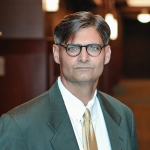SWINDLE: A witness to peace
Published 8:00 am Wednesday, June 3, 2020
|
Getting your Trinity Audio player ready...
|
At 8 p.m. on May 25, 2020, in Minneapolis, Minnesota, 46-year-old George Floyd is being accused by a store clerk of using a counterfeit 20-dollar bill to purchase items in the store. After the police arrive, he is arrested and handcuffed. While he is on the ground, an officer keeps his knee on the right side of Floyd’s neck for almost nine minutes.
George Floyd dies around 8:45 p.m.
Demonstrations and riots erupt in cities across the U.S. in response to the death of George Floyd.
Derek Chauvin, the police officer who was filmed kneeling on Floyd’s neck, is arrested and charged with murder and manslaughter. However, his arrest will not subdue the anger in response to Floyd’s death as it descends into more rioting and looting in several cities.
Meanwhile, President Donald Trump is being briefed by his top military advisors at the Pentagon. He tells the nation that U.S. troops stand ready to provide support to Minnesota if requested to quell unrest.
In Georgia, Atlanta Mayor Keisha Lance Bottoms sends a request to Gov. Brian Kemp to declare a state of emergency. But this is not enough. Ongoing resistance of those disrupting peaceful protests and failing to follow the city’s 9 p.m. curfew prompts Kemp to sign a second Executive Order deploying 3,000 National Guard troops.
The right to assemble and peacefully protest is protected by the 1st Amendment to the United States Constitution. However, when a protest becomes violent and/or property is intentionally damaged, the Constitution offers no protection.
Six days later, I am driving my pickup into town when something to the left draws my attention. There are two crowds of people at the courthouse. One group is white. The other group is black.
Instead of parking at the office, I pull over. I will never forget what I saw.
One of the white men with a long beard is walking rapidly toward a tall black man on the other side of the street. I am certain that a fight is about to erupt. But I am wrong.
The two men walk toward each other and embrace one another in front of the crowd.
My curiosity is overwhelming my desire to go home. I walk over to both of them and ask them what is going on. They just look at me and smile. The men had known one another since they were boys. But they had not seen each other in years.
I am moving from curious to nosy. I ask them why they would even acknowledge one another at this protest. Both men speak at the same time and almost provide an identical answer.
They tell me that they hope someone sees an example of a peaceful protest.
Their hope has already been realized. I, along with many other people riding through Carrollton, become witnesses to peace.
This weekend, there will be thousands of graduation ceremonies. Protesters will be present at some of these events. I pray that the protests will be peaceful, like the one I saw today.
I ask that you pray with me.


